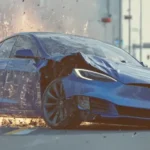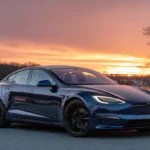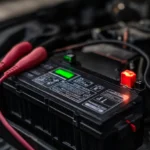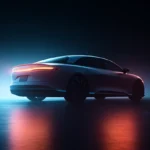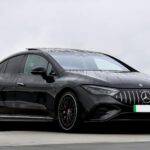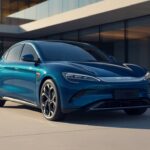For the first time since the modern electric-vehicle era began, Tesla no longer tops the global sales chart. In 2024, a leading Chinese company delivered 1.78 million battery-electric cars versus Tesla’s 1.77 million, nudging past its U.S. rival by a hair and turning a quarterly blip into a yearly crown. This headline—“Leading Chinese Automaker Overtakes Tesla in Global EV Sales—5 Reasons the Shift Matters”—is more than score-keeping. It signals a fundamental power shift that touches every layer of the EV ecosystem, from sticker prices to geopolitics.
1. A Landmark Moment in the EV Race
1. A Landmark Moment in the EV Race
Tesla’s response has been swift—slashing prices, promising an affordable next-gen model, and pivoting hard toward autonomy. Yet Q1 2025 data show BYD shipping roughly three times as many EVs as Tesla while maintaining profitability. The gap is no longer theoretical; it is commercial, cultural, and deeply strategic.
2. How BYD’s Price Playbook Won Mass-Market Hearts
Few forces move metal faster than a low sticker price, and the leading Chinese company wields price as a strategic weapon better than any carmaker alive. In mid-2024, it shocked analysts by launching the Seagull hatchback at under $10 000 in China. A year later, European buyers can order the re-badged Dolphin Surf for £18 650—half the cost of a base-model Tesla Model 3.
2.1 The $10 000 Seagull and a New Global Price Floor
The Seagull does more than undercut rivals; it resets consumer expectations. A 300-kilometre WLTP range, airbags all round, and smartphone-level infotainment prove that “cheap” no longer means “bare-bones.”
2.2 China’s Brutal Price War and Tesla’s Margin Squeeze
Tesla’s reactive discounts carved billions from its gross margin, yet BYD’s vertically integrated model kept profits intact. In China’s crowded showrooms, value is king—and BYD wears the crown.
3. Hybrids: The Overlooked Force Behind the Numbers
The leading Chinese company sells only pure battery cars, but it plays both sides of the charging cable. In 2024, it moved 1.9 million plug-in hybrids, many riding its fifth-generation DM-i architecture that delivers 1 250 miles of combined range on a single tank and charge.
3.1 Plug-in Flexibility Meets Range Anxiety
In second-tier Chinese cities, charging can be patchy. BYD’s hybrids sidestep that hurdle, letting buyers dip a toe into electrification without lifestyle upheaval.
3.2 BYD’s Fifth-Gen DM-i Platform Explained
The newest DM-i system pairs a high-efficiency Atkinson-cycle engine with a modest Blade battery, offering electric commute capability yet seamless long-distance refuelling—an unbeatable combo for first-time EV converts.
4. Vertical Integration: The Secret Cost Armor
UBS tore down a BYD Seal and a Tesla Model 3 made in Shanghai. They found the Seal used 75 % in-house parts versus Tesla’s 46 %, granting BYD tighter cost control.
4.1 Blade Batteries, In-House Chips, and 75 % Self-Made Parts
The leading Chinese company manufactures batteries, semiconductors, and even the plastic clips behind its dashboard. This self-reliance insulates it from supply-chain shocks and enables the eyebrow-raising discounts seen in China’s price war.
5. Global Expansion Beyond Tariff Walls
Europe slapped provisional tariffs on Chinese EVs, but BYD had already broken ground on a €1 billion plant in Hungary and signed MOUs for assembly in Mexico and Brazil. Local plants convert tariff threats into foot-in-the-door opportunities, mirroring Toyota’s playbook from the 1980s.
5.2 Europe’s First Chinese EV Leader
Emerging-market plants give BYD a logistics edge and brand cachet, reassuring buyers that service parts and jobs stay close to home.
5.2 Europe’s First Chinese EV Leader
In May 2025, the leading Chinese company became the first non-European brand to top monthly BEV registrations on the continent. Dealers tout the Dolphin and Atto 3 as the electric “Golfs” of a price-squeezed new era.
6. Tesla’s Countermoves and the Road Ahead
Tesla still holds technological trump cards—over-the-air updates, a vast Supercharger network, and a head start in autonomous driving. Yet recent software recalls and production hiccups on Cybertruck show a maturing, not invincible, giant. Investors eye the promised “$25 000” next-gen Tesla as the moment Elon Musk strikes back. Until then, BYD controls the affordable segment and erodes Tesla’s share in Europe and Asia.
7. Market & Investor Impact: From Valuations to Supply Chains
BYD stock surged 75 % in the first half of 2025, while Tesla slid 16 %. Battery-metal suppliers are already revising demand forecasts: lithium-iron-phosphate (LFP) chemistry, BYD’s staple, now outsells nickel-manganese-cobalt in China, nudging miners toward lower-cost deposits and pressuring high-nickel projects.
8. Policy Ripple Effects on Three Continents
Washington debates stricter Chinese-built EV restrictions; Brussels leans on carbon-footprint rules to slow imports; Beijing doubles down on export tax rebates. Each policy volley raises stakes, yet BYD’s early overseas production hedges risk. ICCT researchers warn that delaying Chinese entrants may simply hurt local EV adoption timelines.
Why This Shift Matters for Every Driver
Leading Chinese Automaker Overtakes Tesla in Global EV Sales—5 Reasons the Shift Matters. The headline captures a pivotal point in the electric revolution: cost leadership crosses the Pacific, product variety widens, and market power decentralizes. For shoppers, it means cheaper choices and faster tech cycles. For investors, it redraws valuation maps. And for policymakers, it underscores that the global EV future will not be written by a single company—or even a single country—but by a competitive mosaic where innovation and affordability share equal billing.


